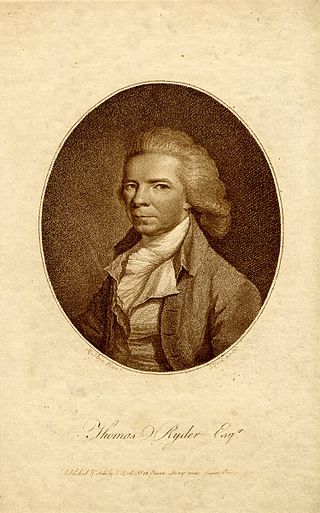
John Ogilby, Ogelby, or Oglivie was a Scottish translator, impresario, publisher and cartographer. He was probably at least a half-brother to James Ogilvy, 1st Earl of Airlie, though neither overtly acknowledged this. Ogilby's most-noted works include translations of the works of Virgil and Homer, and his version of the Fables of Aesop.

The history of Irish theatre begins in the Middle Ages and was for a long time confined to the courts of the Gaelic and "Old English" – descendants of 12th-century Norman invaders – inhabitants of Ireland. The first theatre building in Ireland was the Werburgh Street Theatre, founded in 1637, followed by the Smock Alley Theatre in 1662.

Over the centuries, there have been five theatres in Dublin called the Theatre Royal.
The Leinster Hall was a music or concert hall in Dublin, Ireland, built in Hawkins Street on the site of the third Theatre Royal, after the Royal had been destroyed by fire in 1880. The Leinster Hall opened in November 1886. One of the most notable performers to appear there was Dame Nellie Melba, who gave two concerts in the hall in 1893. The hall closed in 1895, and was redesigned and reopened as the fourth Theatre Royal in 1897.

The Focus Theatre in Dublin, Ireland, was a small theatre which, for more than fifty years, offered a variety of plays from new and established writers, from its foundation in 1967 until its closure in 2012.

The patent theatres were the theatres that were licensed to perform "spoken drama" after the Restoration of Charles II as King of England, Scotland and Ireland in 1660. Other theatres were prohibited from performing such "serious" drama, but were permitted to show comedy, pantomime or melodrama. Drama was also interspersed with singing or dancing, to prevent the whole being too serious or dramatic.
The Werburgh Street Theatre, also the Saint Werbrugh Street Theatre or the New Theatre, was a seventeenth-century theatre in Dublin, Ireland. Scholars and historians of the subject generally identify it as the "first custom-built theatre in the city," "the only pre-Restoration playhouse outside London," and the first Dublin theatre.

Theatre of United Kingdom plays an important part in British culture, and the countries that constitute the UK have had a vibrant tradition of theatre since the Renaissance with roots going back to the Roman occupation.
Richard Daly (1758–1813) was an Irish actor and theatrical manager who, between 1786 and 1797, held the Royal patent for staging dramatic productions in Dublin and became such a dominant figure in Irish theatre that he was referred to as "King Daly".
Walley Chamberlain Oulton (1770?–1820?) was an Irish playwright, theatre historian and man of letters.

Thomas Ryder (1735–1790) was a British actor and theatre manager, associated with the Smock Alley Theatre in Dublin. As a player, he was considered at his best in low comedy.
Crow Street Theatre was a theatre in Dublin, Ireland, originally opened in 1758 by the actor Spranger Barry. From 1788 until 1818 it was a patent theatre.

Aungier Street is a street on the south side of Dublin, Ireland. It runs north-south as a continuation of South Great George's Street.
Henry Giffard was a British stage actor and theatre manager.
John Sowdon was an Irish stage actor, singer and theater manager in the eighteenth century.
Thomas Griffith (1680-1744) was an Irish stage actor and theatre manager.
Luke Sparks (1711–1768) was an Irish stage actor of the eighteenth century.
Isaac Sparks (1719–1776) was an Irish stage actor.
John Richards was an English stage actor of the seventeenth century. An early member of the Duke's Company in London, he was lured away to the new Smock Alley Theatre in Dublin by John Ogilby. He was back with the Duke's at the Dorset Garden Theatre from the mid-1670s, but while in Ireland he was able to play major roles his English performances were generally supporting parts.
Laurence Clinch was an Irish actor, familiarly known as Larry, and accomplished in both tragedy and comedy. The popular farce St Patrick's Day was written and performed to showcase his particular talent.












